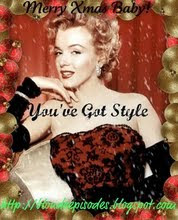Invented by Ken Shyvers, the same guy who invented pinball machines, the Shyvers Multiphone is about 20 inches tall with a 7.5 inch square base and was typically placed on diner counters, tables at drive-ins and bars. But the real hoot (tapping into my Jazz Age slang here) is how this thing actually functioned. Notice the words “talk here” engraved above the track menu…
The all-female team of multiphone disc jockeys in downtown Seattle via Dead Media Archive
Operating over telephone lines mostly in Seattle, Tacoma and Olympia,
Washington, this team of all-female disc jockeys would manually play the
requested song on a phonograph, playing the music through the telephone
connection. And out came the music through the little speakers. How
about that! Doesn’t it remind you of when you would play your favourite
new tracks over the phone to your friends?
Multiphones had a record range of 170 whereas jukeboxes of the time only
had a record range of 20-48. Each song on the Shyver was given a
number, displayed on the menu encased in the cylindrical case, which
could be rotated to make room for all the possible selections.When the 5 cents (some later models ask for 10 cents) was inserted, the two lights on the Multiphone would light up, indicating the telephone line was connecting to the library. This is when the customer would actually speak to the disc jockey through the small speaker at the top. I wonder if they made any small talk during the request process!
At the height of the Shyver Multiphone’s popularity, up to 8,000
models were used in establishments primarily on the west coast of the
United States. However, telephonic music technology was not an entirely
new concept…
Hop over the Atlantic to Paris forty years earlier and you would have
encountered the coin-operated “Theatrophone”, set up in hotels, cafés,
clubs and theatres across the city. Invented in 1881, the earliest
telephonic distribution system could broadcast and transmit sounds to 48
listeners at a time through various telephone lines running through the
sewer systems.It was indeed the first public broadcast entertainment system, commercialised by the Compagnie du Théâtrophone, which continued to operate till 1932.
Costing 50 centimes for five minutes of listening, including news
programs at regular intervals, Victor Hugo described his first
experience of théâtrophone as “pleasant”.
Foreshadowing today’s popular music streaming services
such as Spotify, the Theatrophone service also offered subscription
tickets at a reduced rate to attract regular subscribers, even at
home. Marcel Proust was a keen subscriber to the service.
In 1895, Britain introduced the coin-operated
“Electrophone” to its salons, hotels and restaurants across several
cities. It was these early European telephone line systems combined with
the popularity of the nickel-in-the-slot phonographs introduced in
1890, that paved the way for Shyver’s Multiphone…
When the concept was adapted in the United States by Kenneth Shyver and
his wife Lois in 1939, it went on to be the most successful of these
various telephone line-based music libraries. Compared to the
coin-operated photographs of the time which gave users a choice of only
24 songs, Shyver’s Multiphone offered a much larger selection of up to
170 songs.
It was around the same time that “jukebox” actually first came into
colloquial use in the United States, around 1940. The term
originates from the “Juke Joints” of Jim Crow’s deep South, where these
informal dancing, drinking and gambling establishments (rarely more than
ramshackle huts) were primarily operated by African Americans so they
could have somewhere to socialise since they were barred from most white
entertainment establishments. The word “juke” derives from the Creole
word joog or jug: rowdy, disorderly or wicked. When
African American workers and former slaves migrated north in the early
20th century, they brought the term with them the term, and the cafes,
restaurants and bars that started housing coin-operated phonographs
became known as “juke-joints.” By the 1930s, the stigma of juke being considered a ‘black’ term was lost and “jukeboxes” became part of general society’s official vocabulary.
As for Shyver’s Multiphone jukebox? When newer technologies allowing
jukeboxes to host a larger music library, the Multiphone met its match.
The 45 rpm records brought forth a new jukebox that could hold more than
100 songs, without the disc jockey ladies waiting at the other end of
the line. By 1959, the lines went dead and Shyver had taken his
Multiphone off the market.
If you’re interested in owning a piece of this fascinating music
history, the rare machines occasionally pop up on eBay and there are currently two up for sale on the online marketplace with a base offer of $1,999. You can also watch a guy take one apart on Youtube (video quality not great).
One of the models on offer on eBay was found at an estate sale and was
kept in a box since the 1970s. Of course with Shyver’s disc jockeys out
of commission, it’s only for display, but wouldn’t she make a mighty
fine display at that. A true music history collector’s item.
Be sure to check out all the other bloggers who are participating in Beverly's Pink Saturday event every week. Just click here.
Now, go make something beautiful!
¸.•´¸.•*´¨) ¸.•*´¨)(¸.•´
(¸.•´♥ Tristan ♥
(¸.•´♥ Tristan ♥
Rockolla Wurlitzer Bubbler Jukeboxes - helped put Shyver's off the market
































































































4 comments:
This was really an interesting read. Thanks.
GREAT research as always and an interesting topic to boot! Thanks for sharing.
I have never heard of these things before. Fascinating. Thanks for sharing your knowledge.
Digging on the music history! How cool to know where the "juke" came from!
And being here in Washing, just above Seattle as I write this, I found that trivia very cool and shared it with my son who lives here!
Another fabulous post Tristan- Thanks for keeping my mind alert with interesting reads!
hugs,Jackie
Post a Comment